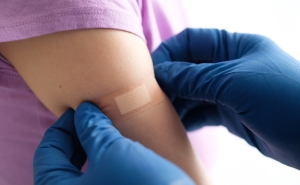The Long History of mRNA Vaccines

Messenger RNA, or mRNA, was discovered in the early 1960s; research into how mRNA could be delivered into cells was developed in the 1970s. So, why did it take until the global COVID-19 pandemic of 2020 for the first mRNA vaccine to be brought to market?
In this explainer, Chris Beyrer talks us through mRNA vaccines’ history, development, and breakthroughs.
There’s a big gap between when the first mRNA flu vaccine was tested in mice in the 1990s and when the first mRNA vaccines for rabies were tested in humans in 2013. What was happening in the interim?
The early years of mRNA research were marked by a lot of enthusiasm for the technology but some difficult technical challenges that took a great deal of innovation to overcome.
The biggest challenge was that mRNA would be taken up by the body and quickly degraded before it could “deliver” its message—the RNA transcript—and be read into proteins in the cells.
The solution to this problem came from advances in nanotechnology: the development of fatty droplets (lipid nanoparticles) that wrapped the mRNA like a bubble, which allowed entry into the cells. Once inside the cell, the mRNA message could be translated into proteins, like the spike protein of SARS-CoV-2, and the immune system would then be primed to recognize the foreign protein.
So, what happened once they figured out this technology?
The first mRNA vaccines using these fatty envelopes were developed against the deadly Ebola virus, but since that virus is only found in a limited number of African countries, it had no commercial development in the U.S.
Then COVID-19 hit … what happened then?
Remember, the COVID-19 pandemic spurred manufacturers to develop dozens of potential vaccines against SARS-CoV-2 and brought tremendous increases in funding. Some of those vaccines used traditional methods involving adenovirus as the spike protein delivery system—such as the Johnson & Johnson vector vaccine.
Thanks to decades of research and innovation, mRNA vaccine technology was ready. With COVID, this technology got its moment and has proven to be extremely safe and effective. Pfizer’s COVID-19 vaccine is the first mRNA product to achieve full FDA approval in the U.S.
What’s next?
Already, vaccine manufacturers are developing mRNA vaccines to protect against other respiratory viruses such as the flu. Moderna is exploring applications of the technology to protect against HIV. It’s a new era for vaccine technology and production, and a testament to scientific progress and decades of research.
Chris Beyrer, MD, MPH ’91, is the Desmond M. Tutu Professor of Public Health and Human Rights and director of the Center for Public Health and Human Rights at the Johns Hopkins Bloomberg School of Public Health.
RELATED CONTENT
- How to Update an mRNA Vaccine
- For mRNA Vaccines, COVID-19 is Just the Beginning
- The New Technology Behind COVID-19 mRNA Vaccines and What This Means for Future Outbreaks





